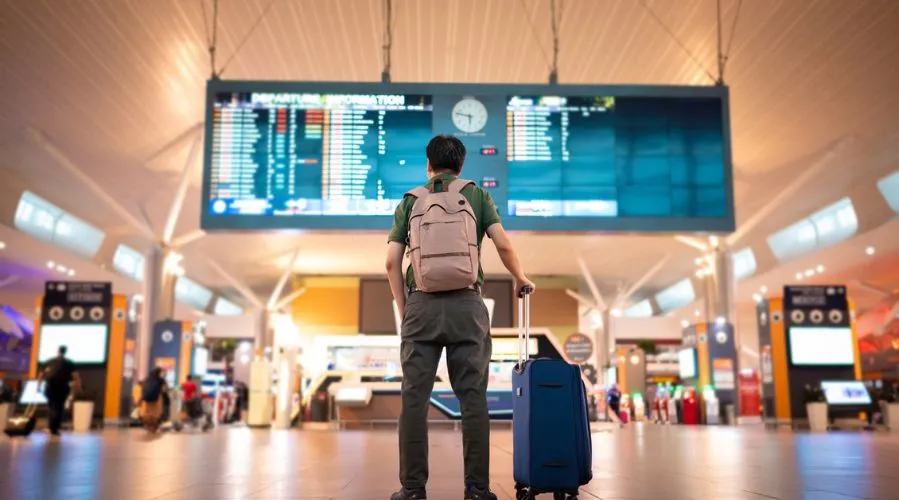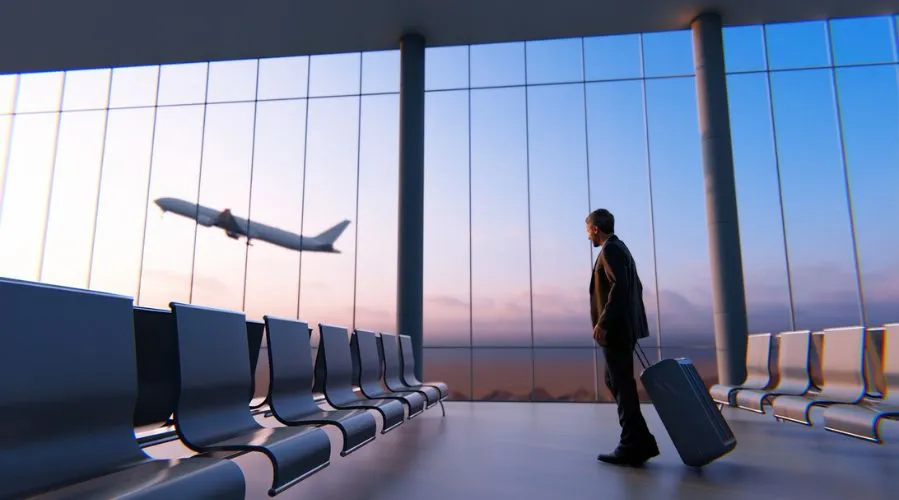
Requirements for a Schengen visa
Requirements for a Schengen visa
Name : Bogdan Kamuta
Date : 26/09/2024
Europe consistently ranks as the most popular travel destination on the planet. And if you too are traveling to Europe — be it for vacation, work, school, or even to make it your new home — chances are you’ll need to have a Schengen visa first. Being granted a Schengen Visa, meanwhile, means that you need to meet some specific requirements. So to make sure that you have all your bases covered before you apply, AXA has all you need to know below.
- What is a Schengen visa (and do I need one)?
- What documents do I need for a Schengen Visa?
- How much money do I need to be granted a Schengen visa?
- Schengen Visa Security Rules
- How to apply for a Schengen visa
- How can AXA help me get my Schengen Visa?
What is a Schengen visa (and do I need one)?
First, a quick overview of what the Schengen visa is —and whether you need one at all. As a result of the Schengen Agreement (originally signed by five European nations in 1985 in the town of Schengen, Luxembourg), Europe’s many nations today can be divided into two specific groups — Schengen countries and Non-Schengen countries.
And while nationals of the Schengen Zone — as well as those of the European Union — can travel to, from, and throughout all the Schengen member states visa-free, most visitors from outside the Schengen Zone need to have a visa to cross any of its many borders. Said visa is, therefore, known as a Schengen visa.
What makes the Schengen visa different from most traditional travel visas is that it allows you to travel to (and between) all the Schengen Area countries on a single permit.
Meanwhile, whether you need a Schengen visa or not will mostly depend on where you’re coming from. So here’s a quick breakdown:
Who doesn’t need a Schengen visa ?
Well, if you’re already a citizen of the Schengen area (and/or the EU), then you do not need a Schengen visa.
Moreover, there are roughly 60 non-EU countries and territories that have signed visa exemption agreements with the EU. These include countries like Australia, Brazil, Canada, the U.K., and the U.S. And citizens of these nations can travel to any Schengen country visa-free too (for stays of less than 90 days in any 180-day period, that is).
Who is required to apply for a Schengen visa?
You will need a Schengen visa, however, If you’re not a national of the Schengen Zone (and/or the EU), and/or if your home country has not signed a visa waiver agreement with the EU. This includes citizens of any African nation, most of the Middle East, China, India, Russia, and nearly a hundred more.
PRO-TIP 1: The European Commission provides full lists of countries with and without visa waiver agreements with the EU too.
What type of Schengen visa do I need?
When applying, you usually have four basic types of Schengen visa to choose from: business, work, student, and short-stay.
The most common one the world over is the short-stay (aka Type C, aka “tourist” visa) — as it allows you to travel to (and throughout) all Schengen countries for up to 90 days in any 180-day period.
If you’re planning more than one trip to Europe, you’ll need a multiple-entry visa. And then there’s the Type A (aka “airport transit”) visa — which allows citizens of non-Schengen States to wait for a connecting flight and/or transit through Schengen airports.
Meanwhile, if you plan to stay in Europe for more than 90 days, you’ll need to apply for a national (aka Type D) visa with your specific Schengen destination country (and/or countries).
PRO-TIP 2: AXA can tell you all about the different types of Schengen visas and which one suits your European travel needs best too.
What documents do I need for a Schengen Visa?
In terms of paperwork, applicants must generally provide the following:
- Your passport (issued within the last 10 years and valid for at least 3 months after your planned date of exit from the Schengen area)
- Your residence permit and/or resident card (if applicable)
- A duly completed and signed Schengen visa application form (which AXA can also help you with)
Schengen visa photo requirements too); - Your itinerary
- Schengen Travel Insurance (IMPORTANT NOTE: Travel insurance is not only mandatory but must meet several criteria in order to be accepted with your visa application; fortunately, AXA’s does — but more on that below!)
- Two recent passport-sized photos (AXA can tell you all about the specific
- Proof of sufficient funds (if applicable — and more on that below too)
- Proof of the purpose of the trip — such as a letter of invitation (if applicable)
- Proof of accommodation (if applicable)
- Proof of socio-economic and professional stability (if applicable)
And remember that — depending on the nature of your trip (e.g., tourism, business, family visit, etc.) — some additional documentation may also be required. For example:
What if I’m visiting family or friends in the Schengen Zone?
You’ll likely need to include an invitation letter. And — if applicable — proof of the relationship with the person inviting you (such as a marriage or birth certificate).
What if I’m coming to the Schengen Zone as an employee of a company?
When traveling as an employee on company business, you’ll probably need to provide a letter from your employer describing the purpose of your visit (similar to an invitation letter), an employment contract, and — if applicable — an income tax return and six months of bank statements.
What if I’m traveling to the Schengen Zone to study?
Similarly, if you’re going to Europe for school — you’ll likely need to show an official invitation (and/or acceptance) letter from the academic institution you plan to attend. And said letter will usually need to include details such as your major, the duration of your studies (i.e., stay in the Schengen), financial aid (if applicable), accommodation and contact details, and so on.
What if I’m going to the Schengen Zone to attend an event?
Same — an invitation letter (from those sponsoring you to attend the event) with details such as the event’s itinerary, location, documentation outlining its nature and purpose, contact details, and so on. As well as an explanation as to why your presence is required at the event.
What if I’m going to the Schengen Zone as a retiree?
As a retired applicant for a Schengen visa — in addition to the standard requirements — you'll likely need to provide official proof of retirement, pension statements, and/or recent bank statements (i.e., to demonstrate financial stability during your stay in the Schengen).
What about minors traveling to the Schengen Zone?
And in case your little ones are going to Europe, their parents (and/or legal guardians) will usually need to provide the child’s birth certificate, a Schengen visa application (signed, when possible, by both parents or guardians), a notarized letter of parental authorization for the child to travel alone, certified copies of both parents’ passports a signed court order (if applicable), and so on.
IMPORTANT NOTE: Keep in mind that — along with all the options above — the actual documentation may still vary slightly from country to country (and depending on your particular situation). So it’s always best to double-check with the official website of the European Commission — as well as those of your destination and home countries — to make sure you have everything you need.
How much money do I need to be granted a Schengen visa?
Additionally, you’ll usually need proof of sufficient financial means when applying for your Schengen visa — that is, to show that you can afford to stay in your Schengen country of choice for your entire trip.
But while this is usually universally verified by providing bank statements (and/or a letter of sponsorship, etc.), the actual amount you need will also vary from nation to nation.
For example, as of late 2024, Germany requires about €45 per day. France, meanwhile, mandates around €120 per day if staying in a hotel (and €65 per day if you have a verified accommodation arrangement), Spain asks for a minimum of about €108 per day, and so on.
So, again, make sure you double-check with the proper channels — as the European Commission and the official website of your destination country (and/or its embassy or consulate) will usually have the latest info regarding how much cash you’ll need.
Schengen Visa Security Rules
Furthermore, to be granted a Schengen visa, all applicants must meet certain specific security criteria — that is, to ensure compliance with visa regulations and avoid overstaying. Namely, you must:
- not be flagged for non-admission in the Schengen Information System (SIS);
- not pose a threat to public order, national security, or international relations (as outlined in the European Union’s Visa Code);
- adhere to the visa’s duration (i.e. the “90/180” rule) — which limits stays within the Schengen Area to 90 days within any 180-day period.
PRO-TIP 3: For more info about the SIS, you can refer to the European Commission’s official SIS leaflet. Meanwhile, the full text of the Visa Code is available on the EU’s EUR-Lex website.
PRO-TIPS 4 and 5: And AXA can also help you better understand your Schengen Visa validity (as well as your Schengen visa document number and sticker).
How to apply for a Schengen visa
Moreover, we’re more than happy to help speed up your Schengen visa application process tenfold with the following comprehensive guides on specific Schengen countries to apply to:
- Austria visa
- Belgium visa
- Czech Republic visa
- Croatia visa
- Denmark visa
- Estonia visa
- Finland visa
- France visa
- Germany visa
- Greece visa
- Hungary visa
- Iceland visa
- Italy Visa
- Latvia Visa
- Liechtenstein visa
- Lithuania visa
- Luxembourg visa
- Malta visa
- Netherlands visa
- Norway visa
- Poland visa
- Portugal visa
- Slovakia visa
- Slovenia visa
- Spain Visa
- Sweden visa
- Switzerland visa
And while that covers the Schengen Zone itself, AXA can also happily help you with dozens of comprehensive, step-by-step guides on how to get a Schengen visa FROM your particular country as well.
How can AXA help me get my Schengen Visa?
First off, all three AXA plans — Basic, Essential, and Annual — meet the requirements for being granted your Schengen visa, which state that your plan must:
- be purchased from an insurance company validated by the consular authorities of all Schengen countries;
- cover you in all the Schengen member countries;
- have a minimum coverage of €30,000 in medical expenses (such as hospitalization, emergency treatment, and repatriation, incl. in case of death);
- be valid for the entire duration of your stay in the Schengen Area.
Plus, AXA’s plans also offer:
- 24/7 assistance;
- “Doctor, please!” feature
- Up to €100,000 coverage in medical expenses;
- Video and Phone Medical Consultations (in English and a number of other languages) with our unique
- Medical repatriation & transport;
- Up to 180 days of coverage;
- Coverage in all Schengen and most European Union countries (including the U.K. — depending on the chosen plan).
…and much, much more!
So compare our three comprehensive plans
and get a free Schengen Travel Insurance quote today.
With AXA, not only are you in good hands throughout your journey — but you also have one less big Schengen Visa requirement to worry about!
RELATED ARTICLES:
- Follow our step-by-step guide to apply for a Schengen visa
- How much does a Schengen visa cost?
- Easiest countries to get a Schengen visa to (and from)
- How to track my Schengen visa online
FAQ
Can I work or study with a Schengen tourist visa?
No. While the tourist (or Type C) allows visitors to enter the Schengen for a short business trip, a holiday, and/or to visit family members, it cannot be converted into a work or study permit. AXA can tell you more about that.
What should I do if my Schengen visa is refused?
If your visa is rejected, you usually have two options — apply again, or write a letter of appeal. You can learn more in the EU’s Article 32(3) of the Visa Code of the Schengen Agreement. The outcome of your appeal will ultimately depend on the authorities of the Schengen country for which you applied.
FINAL PRO-TIP: AXA, meanwhile, will refund you in most cases. We’ll only ask that you provide the appropriate documentation — that is an official explanation as to why your visa was refused (from the relevant embassy, consulate, or visa application center).
Can I get a Schengen Visa online?
Not as of late 2024. That is, you still have to come in to an embassy, consulate, and/or visa application center at some point. But AXA can tell you more about the EU’s plan to bring the Schengen visa application process online too.
AXA Schengen's Travel Insurance




